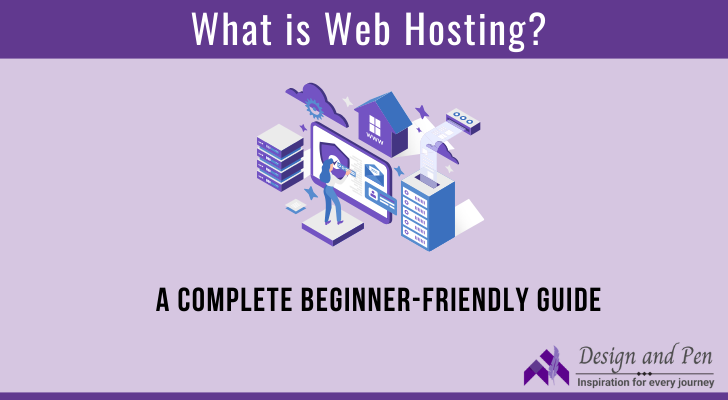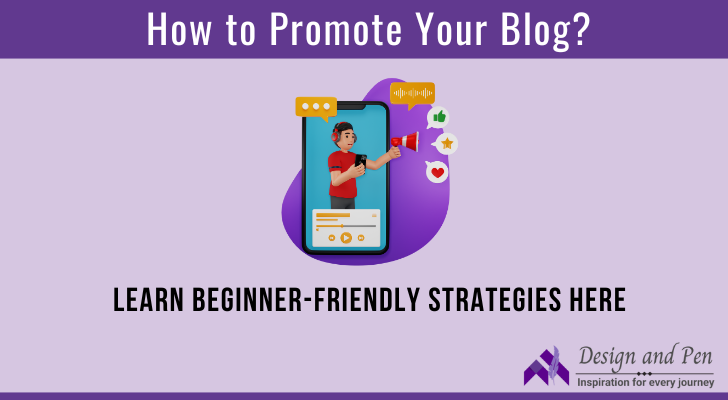Learning about the best practices for blogging and YouTube before starting either of them, helps you in the long run.
Although, I am guessing you are considering both options as your side hustle, but are feeling stuck. You are not alone in this dilemma.
Both options offer fantastic chances for self-expression, and growing an audience. Also, you can even make some extra cash.
In this article, I will walk you through some super practical tips to help you make sense of it all.
But here is the deal: if you are also considering doing both but are unsure which direction to take, then, these small yet best tips, can help you gain a better understanding.
Before that, let me tell you about my previous article. In that, I have dug deep into the blogging vs YouTube debate.
That is like your ultimate guide to this creative world. Now, let us jump into these straightforward tips.
With these tips, you will be ready for your content adventure. Also, your decision-making is a whole lot simpler.

Best Practices for Blogging
Blogging is a great way to express your thoughts and ideas. It is like having a virtual journal that the world can read.
But before you jump into the blogging world, let us explore some practical steps to help you get started.
1. Write for a Couple of Days
So, you are thinking about becoming a blogger? And you might be worrying about how to write a blog. The first step is to give it a test drive. Spend 2-3 days writing about topics that interest you.
How does it feel? Are you enjoying the process? In these first attempts, you can determine whether blogging is for you.
Bonus Tip
During these trial days, try to explore different writing styles. Write a personal essay, a how-to guide, and a listicle.
This will help you identify your preferred style. Also, see what will resonate with your audience.
2. Identify Your Writing Style
Blogging is all about being yourself. As you start writing, pay attention to your style. Is it simple and easy to understand?
Are you being authentic? Do not worry about grammar mistakes for now. Focus on finding your voice.
Bonus Tip
Experiment with different tones and voices in your writing. Try being conversational in one post and more formal in another one.
With this, you will understand your comfort zone and your audience’s preferences.
Also, you can use your writing skills and get paid to write a blog for other top blogs in your niche.
3. Editing
After you have poured your thoughts onto the screen, it is time to put on your editor’s hat.
Take a critical look at your work. Can you trim away unnecessary fluff? How do you feel about your writing?
Keep the original version and have a few editing sessions if needed. Then, you will be amazed at how your writing evolves.
Also, I follow the same and go back to revise or see the previous content if I may edit the important ones in error.
Bonus Tip
Learn about basic editing techniques. For example, cutting unnecessary words, improving sentence structure, and enhancing clarity. These skills will make your writing more engaging.
4. Get Feedback from Others
Share your final draft with trusted friends and family. And, ask for their feedback, but be open to constructive criticism.
Then, understand that there is a scope for improvement with their fresh perspective. So, use those insights to refine your content.
Bonus Tip
Consider joining online writing communities or forums. Here, you can get feedback from experienced writers. This external input can be invaluable for growth.
5. Create Images
A picture is worth a thousand words, they say. So, use user-friendly tools like Canva to craft images that complement your writing.
Hence, experiment with choosing relevant images, fonts, colors, and layouts. This step will not only enhance your content but also sharpen your editing skills.
Bonus Tip
Explore the world of graphic design. Learn to create visually appealing images and infographics. This can be a valuable skill for a blogger.
6. Use Social Media
Now, it is the time to share your blog with the world. Post your articles on social media platforms. Then, you observe how they resonate with your audience.
But, consider it as a test run. How do you feel when others read and react to your content?
Their feedback can provide valuable insights for your blogging journey.
Bonus Tip
Don’t forget to engage with your social media audience. Respond to comments and start conversations related to your blog posts.
Because building an online community can boost your blog’s reach.
By following these steps, you will not only prepare yourself for blogging but also gain a clearer picture of whether it is the right path for you.
Now, before we dive into YouTube, do not forget to check out my cornerstone article. This gives you an in-depth look at the blogging vs. YouTube debate. It’s a valuable resource to help you make an informed decision.
Tools and Resources to Practice Blogging
Now, let us take a closer look at some handy tools and resources to supercharge your blogging journey.
These tools can make your writing process smoother. Also will help you create engaging content.
1) Writing Tools
- Grammarly: An online writing assistant that helps with grammar and spelling.
- Hemingway Editor: With this tool, you can analyze your writing for readability and it suggests improvements.
- Google Docs: A free and collaborative writing platform.
2) Image Creation Tools
- Canva: A user-friendly tool for creating blog post images and graphics.
- Pixabay: A resource for free high-quality images to use in your blog posts.
3) Social Media Management
- Buffer: A social media scheduling tool to promote your blog posts.
- Hootsuite: Another popular tool for managing and scheduling social media content.
4) Blogging Platforms
- WordPress: This is a widely used platform for creating and managing your blogs.
- Blogger: This is a free blogging platform, powered by Google.
- Before making a decision, consider the benefits of a free blog vs hosting your own.
5) SEO Tools
- SEMrush: A comprehensive SEO tool for keyword research and site audit.
- Yoast SEO: It is a plugin in WordPress. With this, you can optimize your blog posts for search engines.
Best Practices for YouTube
Becoming a YouTuber can be an exciting venture. However, it comes with its own set of considerations.
In this section, we will see some essential practices to help you start your YouTube journey with confidence.
Whether you are just starting or looking to improve your existing channel, these tips will guide you in the right direction.
1. Record using your phone camera
To start your YouTube journey, all you need is a smartphone with a decent camera.
Choose a topic you are passionate about and record yourself as if you are having a casual conversation with a friend. Keep it simple, authentic, and engaging.
Bonus Tip:
Invest in a tripod or stabilizer for your phone to ensure you get steady shots. Good audio quality is equally important, so consider getting an external microphone.
2. Your Analysis
Now, let us go deeper into your YouTube adventure. Analyze your comfort level in front of the camera.
Then, pay close attention to your speaking skills, body language, eye contact, and any use of fillers like “uh” and “um.”
Next, ask yourself if you enjoy being in front of the camera and if you envision doing this long-term.
By identifying this, you will have a clearer picture of whether you like to move forward or not.
Bonus Tip:
Keep practicing your on-camera presence. Confidence comes with experience, so don’t be discouraged by initial awkwardness.
3. Watch Your Video
After recording your content, take a step back and watch it objectively. Are there parts that seem unnecessary or off-topic?
Do you want to add more information or clarify certain points? Based on your assessment, decide whether to re-record specific sections or proceed with editing.
Bonus Tip:
Consider creating a script or outline for your videos. This can help you stay on track and reduce the need for extensive editing.
4. Editing
Video editing can be a vital skill for YouTubers. So, use free editing software like Canva to refine your video.
This is where you can fine-tune your content. Also, you should ensure it flows smoothly and remains engaging.
Practicing patience and paying attention to detail is crucial. Because, you may need to re-record, dub your voice, add or delete footage, incorporate music, or insert relevant images.
This is a very important skill to develop in your YouTube journey. You may repeat the tasks that you already did once.
Bonus Tip:
Learn the basics of video editing. They can include cutting clips, adding transitions, and incorporating graphics. These skills can take your videos to the next level.
5. Take Feedback
Once you have made your edits, now, it is time to gather feedback from others.
Do not feel shy in showing your work to the people close to you. Those will give you straight and raw feedback.
So, allow friends or trusted viewers to watch your video and provide their input. Consider their suggestions, and be open to the possibility of re-editing if necessary.
Bonus Tip:
Engage with your YouTube audience through comments and community posts. Their feedback can offer valuable insights into the content they want to see.
6. Use Social-Media
Lastly, share your video on social media. Observe how people interact with your content and analyze the feedback you receive.
Take note of how you feel when people view your content.
Are you feeling comfortable, sad, excited, etc., Be real in analyzing your inner voice.
Bonus Tip:
Work with other YouTubers or creators in your niche. Cross-promotion can help you reach a wider audience and grow your channel.
If you follow these practices, you can identify whether YouTube aligns with your goals.
And do not forget to check out my cornerstone article for a comprehensive comparison between blogging and YouTube. It will be a valuable resource in your decision-making process.
These are some of the best practices for blogging and YouTube.
Tools and Resources to Practice Work For YouTube
Now, if you are leaning more toward video content, these tools and resources can be your best friends.
I hope they will assist you in creating, editing, and optimizing your videos for YouTube.
Let us explore them.
1) Video Recording and Editing
- · OBS Studio: Software for recording and streaming video.
- · Adobe Premiere Pro: A professional video editing software.
- · iMovie: Video editing software for Mac users that is easy to use.
2) Thumbnail Creation
- · Snappa: An online graphic design tool for creating YouTube video thumbnails.
- · Adobe Spark: A free tool for creating stunning graphics, including YouTube thumbnails.
3) Audience Analytics
- · YouTube Analytics: YouTube’s built-in tool for tracking video performance and audience engagement.
- · Google Analytics: For tracking website traffic generated from your YouTube channel.
4) Keyword Research
- · Google Keyword Planner: A tool to find relevant keywords for video titles and descriptions.
- · Tube Buddy: A YouTube-certified browser extension that offers SEO insights.
5) Music and Sound Effects
- · Epidemic Sound: A library of high-quality music and sound effects for YouTube videos.
- · YouTube Audio Library: A collection of royalty-free music and sound effects provided by YouTube.
Conclusion – Best Practices for Blogging and YouTube
In this article, we have explored some best practices for blogging and YouTube.
These insights will be your compass as you navigate the exciting world of online content creation.
While content creation is crucial, mastering blog promotion on social media can significantly boost your blog’s visibility and readership.
Producing engaging blog posts or videos is one way to express yourself and even earn money.
If you are still unsure, please review my primary article, which compares blogging and YouTube thoroughly.
It is loaded with complete information that can provide further clarity for your choice.
Now, by having these best practices for both blogging and YouTube, as well as a deeper understanding of your options, you are well-prepared to embark on your digital journey.
Whether you opt for the writer’s pen, the camera lens, or both, there are so many possibilities available online.
Journeys are just as important as destinations. It is about discovering your voice, connecting with an audience, and enjoying the creative process.
So, as you begin your journey, keep in mind that success comes with consistency and passion.
As you move forward with your blogging and YouTube aspirations, I wish you all the best.
Enjoy the journey ahead, be open to the possibilities, and keep creating.
Frequently Asked Questions (FAQ)
1) Is it necessary to have prior experience to start a blog or YouTube channel?
No, prior experience is necessary. Many successful bloggers and YouTubers started with little to no experience. What is more important is your passion and dedication to learn and improve over time.
2) How can I come up with content ideas for my blog or YouTube channel?
Content ideas can come from your interests, hobbies, and what you are knowledgeable about. You can also research what your target audience is looking for. Based on that, address their questions or problems.
3) What equipment or tools do I need to get started with blogging and YouTube?
For blogging, a computer and an internet connection are the basic requirements. For YouTube, you can start with a smartphone or webcam. Over time, you can invest in better equipment like cameras and microphones if you wish.
This article has best practices for blogging and YouTube which helps you to decide the best fit for you.
4) Can I monetize my blog or YouTube channel, and how does it work?
Yes, both blogs and YouTube channels can be monetized. You can earn through ads, affiliate marketing, sponsorships, and selling products or services. The process involves building an audience and partnering with relevant advertisers or companies.
5) How long does it take to see results and success in blogging or on YouTube?
The timeline varies greatly. Some bloggers and YouTubers see success within a few months, while others take years. How quickly you will see results depends on consistency, quality content, and audience engagement.





